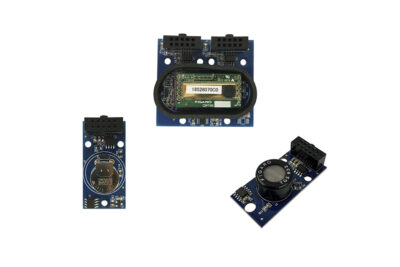Replacement Sensors for cGas Product Line

Replacing a traditional gas sensor not only requires the physical removal of the sensor but the calibration time and expense as well. All cGas Detector models and the cGas-SC Self Contained Controller have Plug & Play Smart Sensor Technology which makes the sensor replacement process quick and easy. Plug and play sensor technology adds “smarts” to the sensor. The sensor is fixed to a small circuit board with electronics that contain information about the type, range and lifespan of the sensor, plus all the necessary calibration data. Since the sensor has been factory calibrated and the data is included, no calibration is required after you have replaced the sensor. Which means, replacing a smart sensor is as easy as:
Power off the gas detector
Remove the screws and gently pull the expired board out of the socket
Insert the new board and replace the screws
Turn the power back on
The gas detector will detect that a new sensor was installed and will automatically update its internal configuration. It is important to replace the entire Plug & Play Smart Board, not just the sensor or the detector. The sensor smart board contains information that tells the device how to operate properly with the new sensor.
After an appropriate warm up period (24 – 48 hours, depending on the gas type), a bump test is recommended to confirm the response from the sensor. The backlight of the display may blink on and off until the gas reading becomes stable.
All cGas Detectors and cGas-SC Self Contained Controller have Plug & Play Smart Sensors and they arrive pre-calibrated and factory configured! cGas Plug & Play smart sensor boards can be ordered to:
Replace an existing, expired smart sensor board (same gas type)
Change the type of gas being monitored in an existing cGas device
Add a second gas channel to a cGas device in the field
Add smart sensor board(s) to a cGas sensorless stock order when ready to be installed
Sensors have an operational life expectancy and will need to be replaced when they no longer perform or respond as expected. Environmental factors like temperatue, humidity, dirt, dust and exposure to repetitive or high concentrations of the target gas all play a part in how long the sensor will last in the field. Regular maintenance along with monthly bump tests and calibrations as recommended by the manufacturer (and applicable regulations) will help keep you informed about the operation of your gas detector. If you suspect something may be affecting its performance or the unit is not responding as it should, you need to test the unit with a bump test to make sure the sensor is capable of measuring gas and if that fails, do a full calibration. If the calibration fails, you need to replace the sensor.
Sensors also have a shelf life for storage. When storing sensors, package them securely so no dust or dirt will settle in or on them, especially for NDIR and PID sensors where dirt can cause operational problems. Electrochemical sensors have a shelf life of 6 months and should be stored in the fridge, otherwise their shelf life may decrease to 3 – 4 months.

